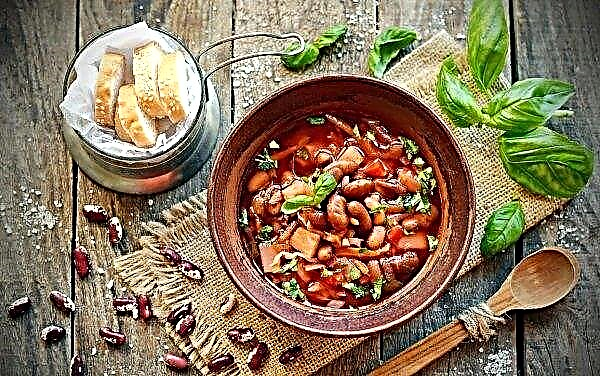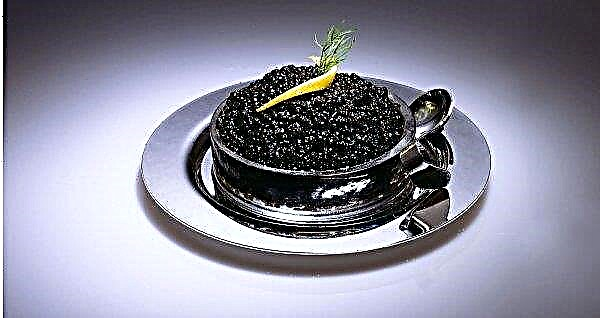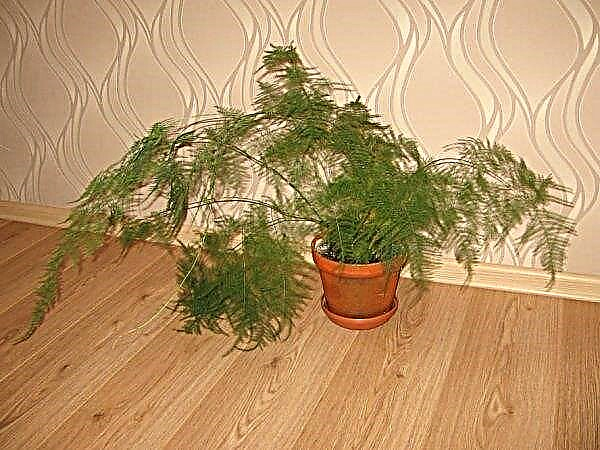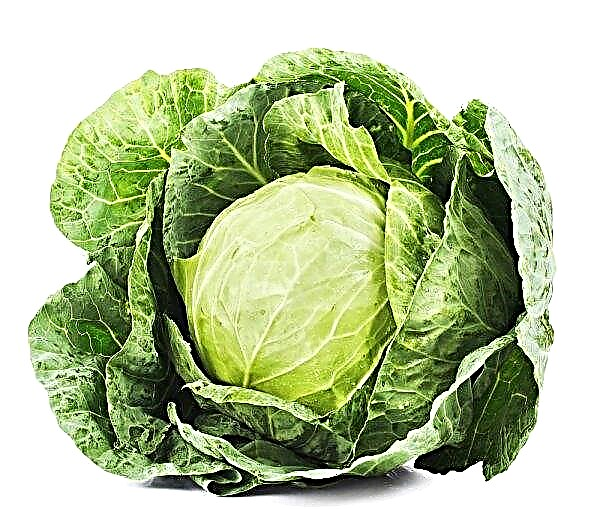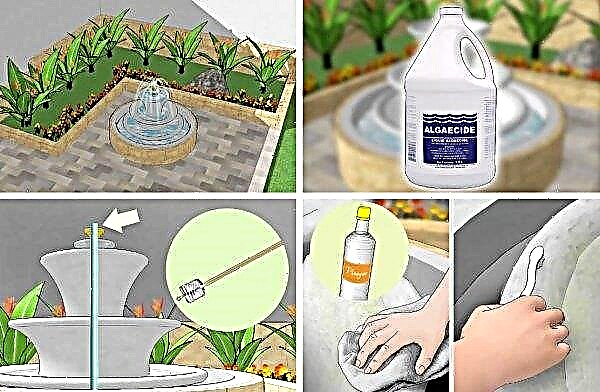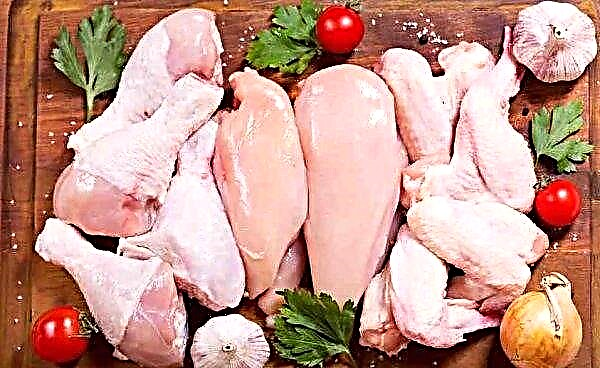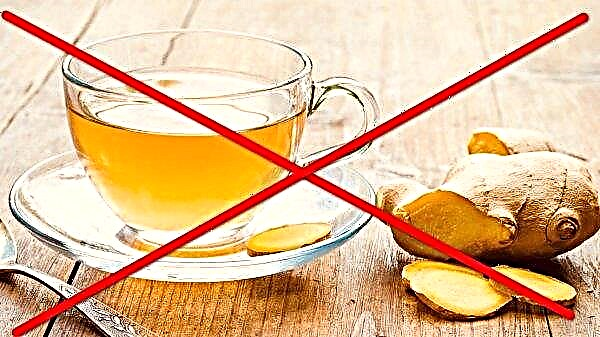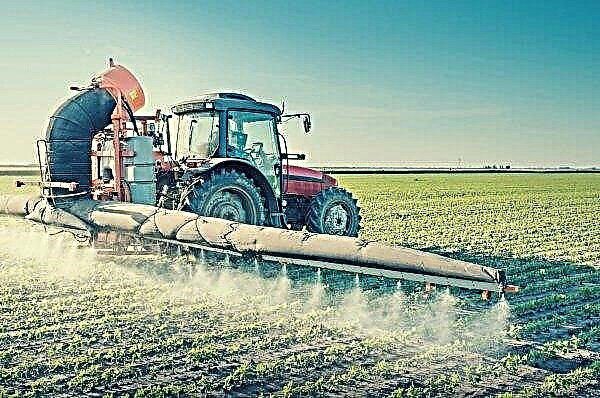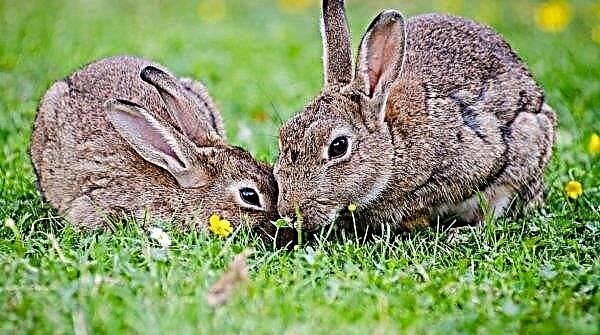Hydrangea is a plant typical of the Russian garden, although few people know that China and Japan are its homeland. The culture is widely recognized among breeders who are actively engaged in the breeding of its new varieties. One of these is Blaiseise hydrangea - a fairly demanding plant, but possessing high decorativeness, fully justifying the investment and gardener's work, delighting with its lush flowering.
Grade description
Hydrangea Blaumaise (Blaumeis, Blaumeise) is an ornamental flowering large-leaved shrub with strong erect shoots. An adult plant reaches a maximum height of 120–130 cm. Over time, it overgrows with a compact, lush crown of large shiny dark green leaves.
Hydrangea blooms from mid-July to September. At this time, the bush is covered with numerous flowers collected in large spherical inflorescences, with a diameter of up to 25 cm. In the center, the buds are usually small, and large along the edges. The flowers are mostly bright blue in color, but if the acidity in the soil is lowered, they may have a pinkish tint.
Did you know? Large-leaved Hydrangea (Hydrangea macrophylla) — one of the rare plants that can accumulate aluminum in itself, which, in fact, provides the blue color of the buds.
Winter hardiness zone of Blaiseise hydrangea
According to the USDA scale worldwide, which determines the frost resistance of plants, Blaiseise hydrangea belongs to the 6th zone. This means that the culture is adapted to grow in regions with a mild climate, where the indicator of the thermometer in the winter season does not fall below -23 ° C. But this does not mean that hydrangea should not be grown in areas where winters are more severe.
Firstly, the scale developed in the USA was originally intended for crops and is quite relative to the ornamental plants growing in Russia. Secondly, gardeners have several options for how to grow shrubs in areas with cold winters: a bush grown in a container can be moved to a cool room for the winter, and growing in open ground should be properly insulated for the winter.
Landing
Planting is the most important process with which the cultivation of decorative culture begins. It requires knowledge of how to properly prepare optimal conditions for the quick survival of a plant and its successful development in the future.
Video: How to plant large-leaved hydrangea
The choice of planting material and place for growth
Seedlings can be grown independently or you can buy ready-made planting material. It should be purchased in specialized nurseries or garden centers. Carefully inspect the material - the shoots must be absolutely whole, healthy, without signs of rot and damage. It is best to purchase 2-3 year old bushes.
For landing it is important to choose the right place. Hydrangea prefers to grow in partial shade, since a long stay in the hot sun can cause burns. But do not look for her a place in the very shaded corners of the garden - being in such conditions, the plant will begin to hurt. It is advisable that the terrain be protected from the wind.Important! You can not plant a hygrophilous hydrangea next to tall trees, as their powerful roots will take all the water from the soil.

Landing should be started in the spring, when the soil is already sufficiently warmed up (end of March - April). In autumn, you can also plant hydrangea, but you need to do this in the first weeks of September, since a bush planted later may not have time to take root before winter.
Soil preparation
Hydrangea Blauma is extremely demanding on the composition of the soil. It needs a nutrient-rich soil. The soil mixture for planting must be prepared in advance by mixing humus, garden soil, sand and peat in the proportions of 2: 2: 1: 1. This mixture will need to fill the landing pit.
Important! To determine the acidity of the soil "by eye", pay attention to the buds — bright flowers indicate a normal level of acidity, and dim ones indicate an increased alkali content.
Keep in mind that shrubs prefer acidic soils with a pH of 5. You can determine the indicator using a special indicator. In an alkaline soil, the plant will hurt, and most likely will not bloom - this is due to the fact that as a result of the alkaline reaction, trace elements important for hydrangea, such as iron and phosphorus, become inaccessible. You can increase the acidity with citric acid: 2-3 tsp. substances are diluted in 10 liters of water (per 1 m²).

Disembarkation process
For planting, you need to dig a hole with a depth and width of about 50-60 cm. If the soil in the area is characterized by high humidity, it is better to lay a drainage layer of any stone at the bottom of the hole. When group planting several bushes, maintain a distance between the planting pits of at least 1 m.
The landing process consists of the following actions:
- The seedling must be removed from the packaging container, shake the ground and place it in a bucket of water so that the roots are wet.
- At the bottom of the pit, pour part of the nutrient soil.
- Set the seedling inside, carefully spreading the roots.
- To fill up a hole, to compact the soil.
- Water abundantly, spending one copy near a bucket of water. In the process, soil can be acidified if it needs it.
- Sprinkle around the trunk circle with mulch, using peat or fallen needles.
 During planting, you need to make sure that the root neck of the bush is at least 2-3 cm above the soil level, since it contains the lower buds that give young shoots.
During planting, you need to make sure that the root neck of the bush is at least 2-3 cm above the soil level, since it contains the lower buds that give young shoots.Care
Hydrangea of the Blaumeise variety needs constant care, and this applies not only to young seedlings, but also to adult plants. In particular, you need to regularly water, loosen and fertilize the soil, carry out pruning, and in the fall prepare the culture for a successful wintering.
Did you know? The name itself speaks of the hydrophilicity of hydrangea: biology-systematics gave it the name Hydrangea, where hydor means “water” and angeion means a vessel.
Watering and fertilizer
Hydrangea needs a lot of moisture to develop well. It is desirable to carry out irrigation with the use of settled warm water, which can be pre-collected in barrels placed in the sun. The amount and volume of irrigation are determined by the state of the soil - its top cover should not dry out. On average, they carry out 2 irrigation per week, spending about 8-10 liters of water for each shrub.
 Make sure that water does not get on the leaves and flowers, which will begin to die from such constant mechanical stress.
Make sure that water does not get on the leaves and flowers, which will begin to die from such constant mechanical stress.
Hydrangea needs fertilizer. Throughout the entire period, 3 main dressings are carried out: the first - in the early spring, when the buds swell, the second - during the period when the buds appear, and the third - in the fall, when preparing the shrub for winter.
As a fertilizer, it is better to use complex mineral compositions. Liquid fertilizers, which can be administered simultaneously with irrigation, have shown themselves well, for example, such as Ferimix or Gilea.
Important! Several times during the season, you need to loosen the soil to ensure good air and moisture circulation in it. After this, the soil is mulched with sawdust, needles or peat, laying a layer 10-12 cm thick.
In addition to mineral fertilizing, the soil can be fertilized with organic matter. During spring top dressing, you can add fermented manure to the water for irrigation. Some gardeners add humus under the bushes during loosening of the soil or add urea, at the rate of 20–25 g per plant.
Trimming and Shaping
The first few seasons hydrangea is subjected exclusively to sanitary pruning, removing damaged, dry shoots. Next, every spring, you need to carry out cutting haircuts, shortening the shoots to the first living buds, cutting off old inflorescences.
You also need to remove branches that let their growth in the center of the bush. It is advisable to treat the cut sites with a potassium permanganate solution or garden varnish to prevent the penetration of fungal infections.
Shelter for the winter
At the beginning of the article it was already said that large-leaf hydrangea must be covered for the winter. In anticipation of the cold snap (in September), it is necessary to carry out sanitary pruning, and then treat the cut sites with garden varieties. It is also necessary to remove the foliage from the lower half of the bush, cut off the inflorescences.
Then all biological debris is collected from the site, including cut fragments, fallen leaves. From mid-September, watering is stopped. The base of the shrub should be covered with dry soil, and the trunk circle should be mulched with sand or peat.The process of sheltering the bush is simplified by the fact that hydrangea is not afraid of boiling, so you can use absolutely any material that is not even conducive to breathing, such as polyethylene. The main task is to save the tops of shoots with flower buds, so in October the branches of the bush are bent to the ground.

It’s better not to lay them on open ground, but use them as a “pillow” of the board. The branches are fixed in this position. Top bush is covered with protective material (burlap, spanbond, etc.), sprinkled with sawdust. Next, a layer of polyethylene is laid with the holes made for air and is securely fixed on all sides.
Important! If the winter is snowless, it is advisable to lay the spruce branches on top of the polyethylene.
Use in landscape design
Hydrangea Blaumise is used in single and group plantings. The culture can be grown in a container, which is also quite convenient. Firstly, the plant is easy to hide for the winter period, and secondly, the mobility of the container will allow you to create different compositions with the participation of hydrangea, changing floral patterns. Potted shrubs can be used to beautifully decorate terraces, loggias and balconies.
Interesting decorative effects can be created if you make a group flowerbed planting by adding other varieties of different colors to the Blaumaise hydrangea, such as the snow-white Annabel or Red Center with red inflorescences.
Hydrangea looks great in company with roses, lilies, clematis, spirea. Its forms are spectacular in live unformed hedges. The plant's love for acidic soils allows you to plant it in the company of coniferous crops. A bush next to thuja and fir will look beautiful.
Fans of minimalism will surely like a smooth green lawn with a lush bush of hydrangea as an accent element. The location of the plant to moisture will allow you to place it near a reservoir, where the shrub will become the main decoration of the coastal territory.
Breeding methods
Hydrangea can be propagated in different ways, so gardeners have the opportunity to choose the most optimal for themselves. Breeding methods:
- The seeds. The most troublesome way, but at the same time allowing you to get immediately a large amount of planting material. Seeds are sown in March in a separate container with soil mixture. You do not need to drop them. The earth is moistened, after which the container is covered with polyethylene or a glass lid to make a greenhouse. Every day the greenhouse needs to be ventilated, and the soil moistened. The first sprouts will appear in about 3 weeks. For 2 years, plants need to be grown at home and only then can be transplanted into the open ground. It should be noted that this method of breeding a selection variety may not bring the expected result, since hybrid cultures practically do not inherit the properties of mother plants.

- Cuttings. Cuttings are carried out in the summer (from mid-June to mid-July) in cloudy weather or in the morning. Green shanks are cut from a shrub about 10-12 cm long. The lower leaves must be removed so that only a couple of top leaves with buds remain. For better rooting, the lower parts of the segments should be treated with a growth stimulator (for example, Epin). The material is planted obliquely in the soil, consisting of earth, peat and sand, to a depth of 5–7 cm. After a month, the cuttings are rooted and can be carefully transplanted to a permanent place.

- Layering. For propagation, young side branches are used. In spring or autumn they are tilted and fastened to the ground with brackets (to a depth of 10-15 cm). Previously, an oblique incision is made on the underside of the shoot placed in the hole to accelerate the formation of roots in this place. Top branches sprinkle with earth and moisturize regularly. After 1-2 months, the shoots will take root, then they can be separated from the mother bush and transplanted.

- By dividing the bush. This method is well used when transplanting hydrangea in early spring. The bush must first be well watered, then dig and wash the roots from the ground. The rhizome is divided into several parts, after which each of them is immediately planted in the landing pits prepared according to all the rules. It is advisable to slightly trim the ends of the roots and shoots before this.

- Offspring. Reproduction by offspring should be carried out in the fall. First you need to remove the topsoil and carefully, so as not to damage the rhizome of the mother bush, separate the shoots overgrowth. It is planted on a separate garden bed and reared for 2 years.

Diseases and pests and their control
Gardeners need to take into account that the rules for caring for hydrangea must be followed, since otherwise the plant may become sick and die. In particular, a deficiency or excess of moisture, a poor mineral composition of the soil, etc. become a common cause of diseases. Fungal infections transmitted by insects, wind, soil or groundwater can also overtake a crop.
Particularly undesirable for a decorative flower is the lack of flowering. A common cause of the disease is incorrect pruning, when all shoots are cut for the winter. Also, flowering may not be due to freezing of the buds, the stay of the crop in the bright sun or lack of watering.Important! To improve the culture, you should establish the rules of maintenance and care. You can try to transplant the plant to a new place, after fertilizing the soil.
The most dangerous are diseases such as:
- Chlorosis - manifested by a lack of iron in the soil. It is characterized by rapid yellowing and drying of the leaves, but the veins do not lose their green color. To cure the plant, it is necessary to fertilize the soil with aluminum sulfate (2-3 kg per 1 m²) or top dressing based on iron sulfate: dilute 2 g of the product in 1 l of water and add 3 g of citric acid (per 1 plant).

- White rot - a fungal disease transmitted through biological debris on the site or from neighboring crops. The fungus penetrates the roots and absorbs nutrients. The main symptoms: darkening of the shoots, white coating on the leaves (like cotton wool), rotting of the stems at the very base. Before plaque appears, the plant can still be saved: you need to remove the damaged shoots and burn, and spray the culture with a Bordeaux mixture. If the coating has covered the leaves, it is useless to fight - you will have to dig out the hydrangea and burn it.

- Powdery mildew - most often the fungus affects young plants. In this case, pale yellow-green spots appear on the leaves, and a gray-purple coating forms on the back side. The leaves fall off and, if not taken in time, the plant quickly dies. Having noticed the symptoms, you need to cut off all the diseased areas, and treat the bush with Fitosporin or Topaz.
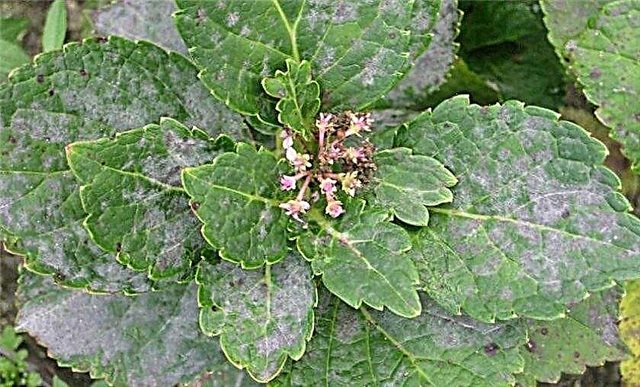
- Septoria - the fungus affects the lower parts of the shoots and moves up. On the leaves you can see small spots - in the center they are light, and brown at the edges.Affected areas need to be cut, and the plant is sprayed with a solution of the drug "Rodomit".

Important! After pruning a diseased shrub, be sure to disinfect the entire garden tool, since a fungal infection on it can persist for a long time.
In addition to diseases, insect attacks can cause great harm to hydrangeas. The following pests need to be wary:
- Leaf aphid - eats hydrangea soft tissue juice. Signs of an attack are the drying of leaves, on which aphid colonies can be seen. You can get rid of the pest by spraying with insecticides "Spark" or "Akarin." Aphids are afraid of ladybugs - to attract these beneficial insects, you can plant marigolds next to hydrangea.
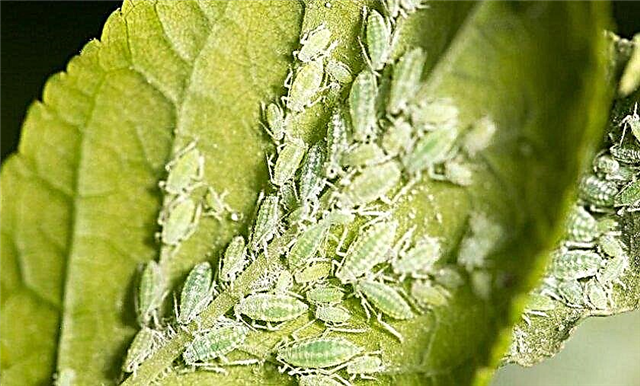
- Spider mite - progresses and actively multiplies in dry, hot weather. You can determine its appearance by the appearance of the finest web on foliage. If the plant is severely affected, tick mites are clearly visible on the leaves in the form of reddish spots. You can destroy the pest by spraying with the preparations “Akarin”, “Lightning”.

- Garden slug - the insect eats young leaves, progresses in thickened places with high humidity. Pests can be collected manually, and in order to get rid of egg laying - carry out the treatment with “Molluscocide”.

It is better to try to prevent any disease or attack of insects than to fight diseases later. First of all, this concerns the observance of the rules of agricultural technology: it is necessary to maintain the correct acidity, humidity and mineral composition of the soil.
Before the active growth of shoots, as well as in summer and autumn, preventive treatment with chemical agents is necessary. From diseases, it is possible to spray with fungicides, for example, Bordeaux liquid, and “Fitoverm” or “Aktara” will help to protect the culture from the invasion of insect pests.

So, the hydrangea of the Blaumaise variety is a magnificent ornamental shrub, which is a true decoration of the garden plot. However, gardeners need to remember that to achieve colorful flowering is possible only with careful observance of the rules of planting and care.













